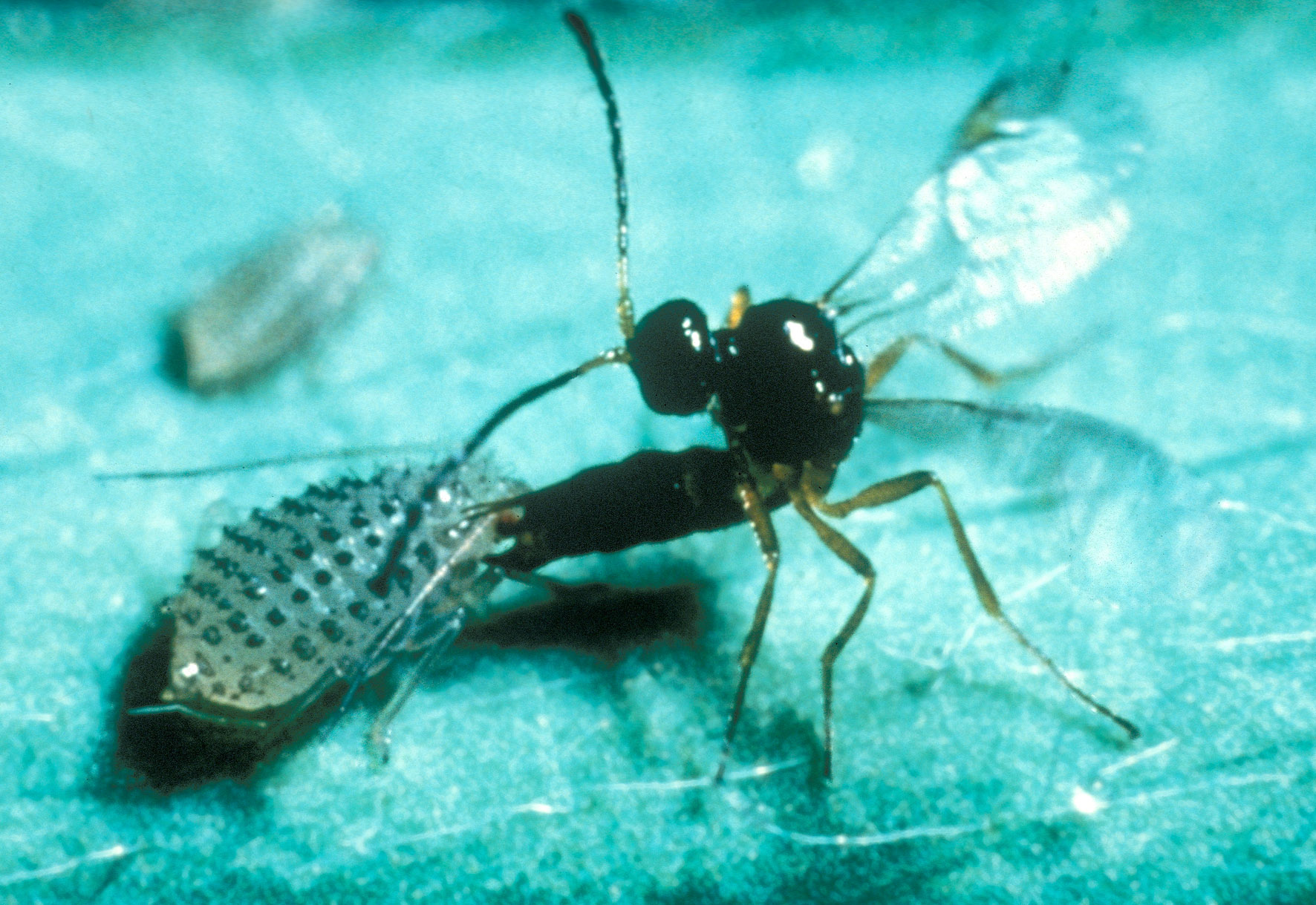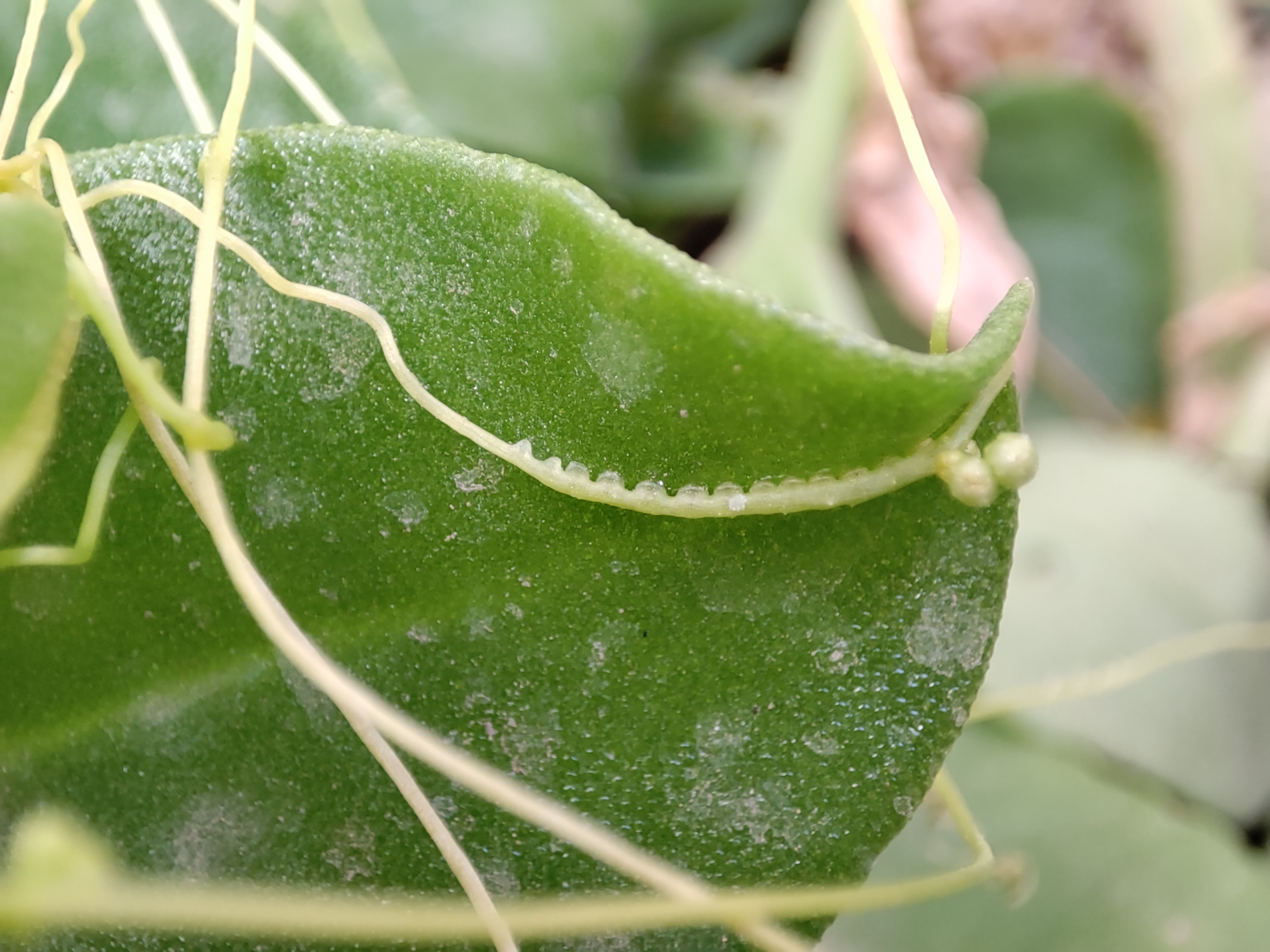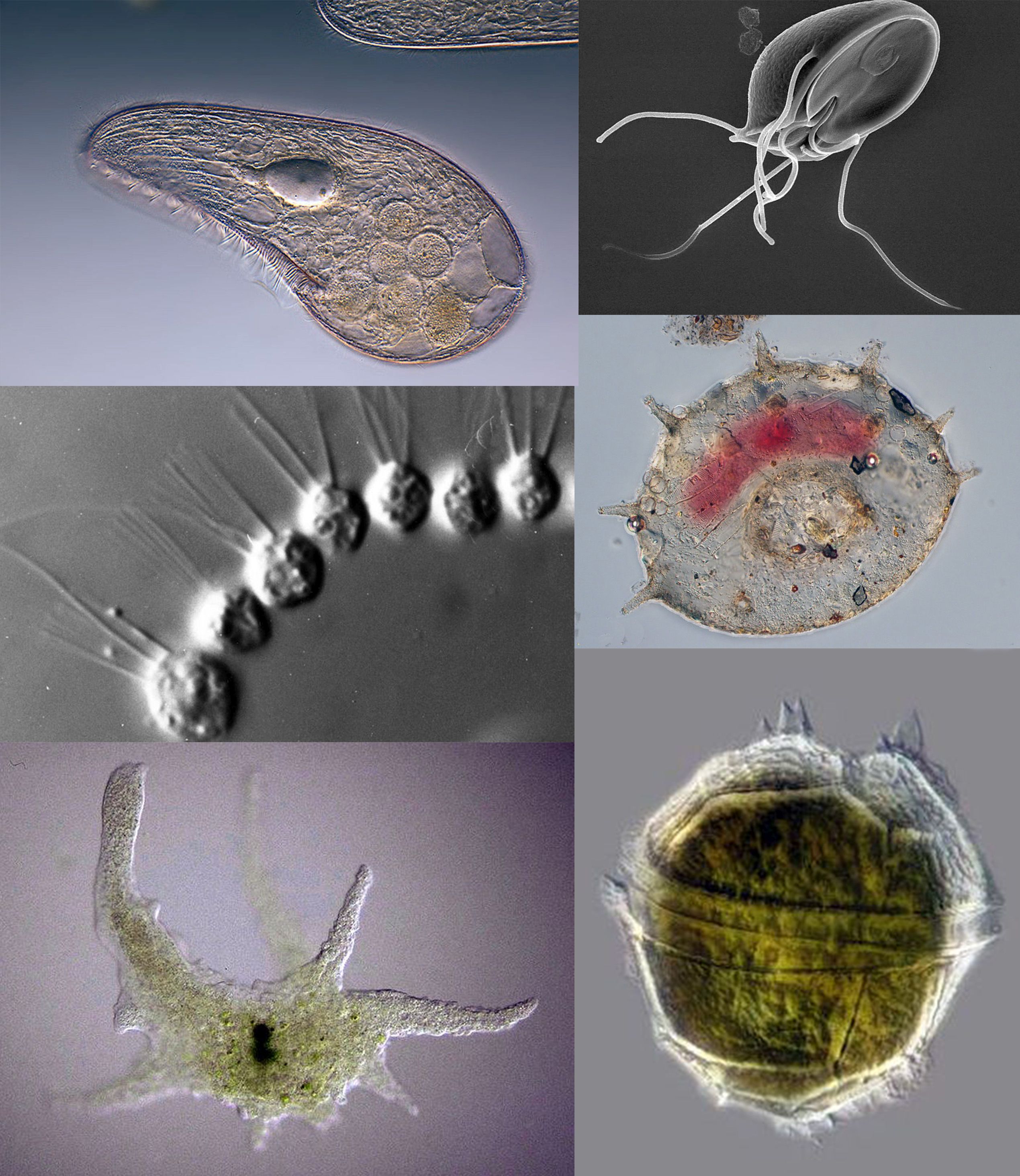|
Parasitic
Parasitism is a close relationship between species, where one organism, the parasite, lives (at least some of the time) on or inside another organism, the host, causing it some harm, and is adapted structurally to this way of life. The entomologist E. O. Wilson characterised parasites' way of feeding as "predators that eat prey in units of less than one". Parasites include single-celled protozoans such as the agents of malaria, sleeping sickness, and amoebic dysentery; animals such as hookworms, lice, mosquitoes, and vampire bats; fungi such as honey fungus and the agents of ringworm; and plants such as mistletoe, dodder, and the broomrapes. There are six major parasitic strategies of exploitation of animal hosts, namely parasitic castration, directly transmitted parasitism (by contact), trophicallytransmitted parasitism (by being eaten), vector-transmitted parasitism, parasitoidism, and micropredation. One major axis of classification concerns invasiveness: an endopar ... [...More Info...] [...Related Items...] OR: [Wikipedia] [Google] [Baidu] [Amazon] |
Orobanchaceae
Orobanchaceae, the broomrapes, is a family (biology), family of mostly parasitic plants of the order (biology), order Lamiales, with about 90 genus, genera and more than 2000 species. Many of these genera (e.g., ''Pedicularis'', ''Rhinanthus'', ''Striga'') were formerly included in the family Scrophulariaceae ''sensu lato''. With its new circumscription, Orobanchaceae forms a distinct, monophyletic family. From a phylogenetic perspective, it is defined as the largest crown clade containing ''Orobanche major'' and relatives, but neither ''Paulownia tomentosa'' nor ''Phryma leptostachya'' nor ''Mazus japonicus''. The Orobanchaceae are annual plant, annual herbaceous plant, herbs or perennial plant, perennial herbs or shrubs, and most (all except ''Lindenbergia'', ''Rehmannia'' and ''Triaenophora'') are parasitic plant, parasitic on the roots of other plants—either holoparasitic or hemiparasitic (fully or partly parasitic). The holoparasitic species lack chlorophyll and therefore ... [...More Info...] [...Related Items...] OR: [Wikipedia] [Google] [Baidu] [Amazon] |
Parasitoid
In evolutionary ecology, a parasitoid is an organism that lives in close association with its host (biology), host at the host's expense, eventually resulting in the death of the host. Parasitoidism is one of six major evolutionarily stable strategy, evolutionary strategies within parasitism, distinguished by the fatal prognosis for the host, which makes the strategy close to predation. Among parasitoids, strategies range from living inside the host (''endoparasitism''), allowing it to continue growing before emerging as an adult, to Paralysis, paralysing the host and living outside it (''ectoparasitism''). Hosts can include other parasitoids, resulting in hyperparasitism; in the case of oak galls, up to five levels of parasitism are possible. Some parasitoids Behavior-altering parasite, influence their host's behaviour in ways that favour the propagation of the parasitoid. Parasitoids are found in a variety of Taxon, taxa across the insect superorder Endopterygota, whose compl ... [...More Info...] [...Related Items...] OR: [Wikipedia] [Google] [Baidu] [Amazon] |
Dodder
''Cuscuta'' (), commonly known as dodder or amarbel, is a genus of over 201 species of yellow, orange, or red (rarely green) parasitic plants. Formerly treated as the only genus in the family Cuscutaceae, it now is accepted as belonging in the morning glory family, Convolvulaceae, on the basis of the work of the Angiosperm Phylogeny Group. The genus is found throughout the temperate and tropical regions of the world, with the greatest species diversity in subtropical and tropical regions; the genus becomes rare in cool temperate climates, with only four species native to northern Europe. Folk names include strangle tare, strangleweed, scaldweed, beggarweed, lady's laces, fireweed, wizard's net, devil's guts, devil's hair, devil's ringlet, goldthread, hailweed, hairweed, hellbine, love vine, pull-down, angel hair, and witch's hair. Description ''Cuscuta'' can be identified by its thin stems appearing leafless, with the leaves reduced to minute scales. In these respects it cl ... [...More Info...] [...Related Items...] OR: [Wikipedia] [Google] [Baidu] [Amazon] |
Host (biology)
In biology and medicine, a host is a larger organism that harbours a smaller organism; whether a parasite, parasitic, a mutualism (biology), mutualistic, or a commensalism, commensalist ''guest'' (symbiont). The guest is typically provided with nourishment and shelter. Examples include animals playing host to parasitic worms (e.g. nematodes), cell (biology), cells harbouring pathogenic (disease-causing) viruses, or a Fabaceae, bean plant hosting mutualistic (helpful) Rhizobia, nitrogen-fixing bacteria. More specifically in botany, a host plant supplies nutrient, food resources to micropredators, which have an evolutionarily stable strategy, evolutionarily stable relationship with their hosts similar to ectoparasitism. The host range is the collection of hosts that an organism can use as a partner. Symbiosis Symbiosis spans a wide variety of possible relationships between organisms, differing in their permanence and their effects on the two parties. If one of the partners in an ... [...More Info...] [...Related Items...] OR: [Wikipedia] [Google] [Baidu] [Amazon] |
Mistletoe
Mistletoe is the common name for obligate parasite, obligate parasitic plant, hemiparasitic plants in the Order (biology), order Santalales. They are attached to their host tree or shrub by a structure called the haustorium, through which they extract water and nutrients from the host plant. There are hundreds of species which mostly live in tropical regions. The name mistletoe originally referred to the species ''Viscum album'' (European mistletoe, of the family Santalaceae in the order Santalales); it is the only species native to the British Isles and much of Europe. A related species with red fruits, rather than white, ''Viscum cruciatum'', occurs in Southwest Spain and Southern Portugal, as well as in Morocco in North Africa and in southern Africa. There is also a wide variety of species in Australia. The genus ''Viscum'' is not native to North America, but ''Viscum album'' was introduced to Northern California in 1900. The eastern mistletoe native to North America, ''Ph ... [...More Info...] [...Related Items...] OR: [Wikipedia] [Google] [Baidu] [Amazon] |
Tapeworms
Cestoda is a class of parasitic worms in the flatworm phylum (Platyhelminthes). Most of the species—and the best-known—are those in the subclass Eucestoda; they are ribbon-like worms as adults, commonly known as tapeworms. Their bodies consist of many similar units known as proglottids—essentially packages of eggs which are regularly shed into the environment to infect other organisms. Species of the other subclass, Cestodaria, are mainly fish-infecting parasites. All cestodes are parasitic; many have complex life histories, including a stage in a definitive (main) host in which the adults grow and reproduce, often for years, and one or two intermediate stages in which the larvae develop in other hosts. Typically the adults live in the digestive tracts of vertebrates, while the larvae often live in the bodies of other animals, either vertebrates or invertebrates. For example, '' Diphyllobothrium'' has at least two intermediate hosts, a crustacean and then one or more ... [...More Info...] [...Related Items...] OR: [Wikipedia] [Google] [Baidu] [Amazon] |
Parasitic Castration
Parasitic castration is the strategy, by a parasite, of blocking reproduction by its host, completely or in part, to its own benefit. This is one of six major strategies within parasitism. Evolutionary strategy The parasitic castration strategy, which results in the reproductive death of the host, can be compared with the parasitoid strategy, which results in the host's death. Both parasitoids and parasitic castrators tend to be similar to their host in size, whereas most non-castrating parasites are orders of magnitude smaller than the host. In both strategies, an infected host is much less hospitable to new parasites than an uninfected one. A parasite that ends the reproductive life of its host theoretically liberates a significant fraction of the host's resources, which can now be used to benefit the parasite. The fraction of intact host energy spent on reproduction includes not just gonads and gametes but also secondary sexual characteristics, mate-seeking behavior, competi ... [...More Info...] [...Related Items...] OR: [Wikipedia] [Google] [Baidu] [Amazon] |
Fungi
A fungus (: fungi , , , or ; or funguses) is any member of the group of eukaryotic organisms that includes microorganisms such as yeasts and mold (fungus), molds, as well as the more familiar mushrooms. These organisms are classified as one of the kingdom (biology)#Six kingdoms (1998), traditional eukaryotic kingdoms, along with Animalia, Plantae, and either Protista or Protozoa and Chromista. A characteristic that places fungi in a different kingdom from plants, bacteria, and some protists is chitin in their cell walls. Fungi, like animals, are heterotrophs; they acquire their food by absorbing dissolved molecules, typically by secreting digestive enzymes into their environment. Fungi do not photosynthesize. Growth is their means of motility, mobility, except for spores (a few of which are flagellated), which may travel through the air or water. Fungi are the principal decomposers in ecological systems. These and other differences place fungi in a single group of related o ... [...More Info...] [...Related Items...] OR: [Wikipedia] [Google] [Baidu] [Amazon] |
Protozoa
Protozoa (: protozoan or protozoon; alternative plural: protozoans) are a polyphyletic group of single-celled eukaryotes, either free-living or parasitic, that feed on organic matter such as other microorganisms or organic debris. Historically, protozoans were regarded as "one-celled animals". When first introduced by Georg Goldfuss, in 1818, the taxon Protozoa was erected as a class within the Animalia, with the word 'protozoa' meaning "first animals", because they often possess animal-like behaviours, such as motility and predation, and lack a cell wall, as found in plants and many algae. This classification remained widespread in the 19th and early 20th century, and even became elevated to a variety of higher ranks, including phylum, subkingdom, kingdom, and then sometimes included within the paraphyletic Protoctista or Protista. By the 1970s, it became usual to require that all taxa be monophyletic (derived from a common ancestor that would also be regarded as protozo ... [...More Info...] [...Related Items...] OR: [Wikipedia] [Google] [Baidu] [Amazon] |
Trematoda
Trematoda is a class of flatworms known as trematodes, and commonly as flukes. They are obligate internal parasites with a complex life cycle requiring at least two hosts. The intermediate host, in which asexual reproduction occurs, is a mollusk, usually a snail. The definitive host, where the flukes sexually reproduce, is a vertebrate. Infection by trematodes can cause disease in all five vertebrate classes: mammals, birds, amphibians, reptiles, and fish. Etymology Trematodes are commonly referred to as flukes. This term can be traced back to the Old English name for flounder, and refers to the flattened, rhomboidal shape of the organisms. The etymology of trematode stems from the Greek word ''trēmatṓdēs'', which means "pierced with holes", and refers to the worm's sucker, which pierces a hole in the host while the worm is attached and feeding. Taxonomy There are 18,000 to 24,000 known species of trematodes, divided into two subclasses — the Aspidogastrea and t ... [...More Info...] [...Related Items...] OR: [Wikipedia] [Google] [Baidu] [Amazon] |
Sleeping Sickness
African trypanosomiasis is an insect-borne parasitic infection of humans and other animals. Human African trypanosomiasis (HAT), also known as African sleeping sickness or simply sleeping sickness, is caused by the species '' Trypanosoma brucei''. Humans are infected by two types, ''Trypanosoma brucei gambiense'' (TbG) and ''Trypanosoma brucei rhodesiense'' (TbR). TbG causes over 92% of reported cases. Both are usually transmitted by the bite of an infected tsetse fly and are most common in rural areas. Initially, the first stage of the disease is characterized by fevers, headaches, itchiness, and joint pains, beginning one to three weeks after the bite. Weeks to months later, the second stage begins with confusion, poor coordination, numbness, and trouble sleeping. Diagnosis involves detecting the parasite in a blood smear or lymph node fluid. A lumbar puncture is often needed to tell the difference between first- and second-stage disease. Prevention of severe diseas ... [...More Info...] [...Related Items...] OR: [Wikipedia] [Google] [Baidu] [Amazon] |
Behavioral Ecology
Behavioral ecology, also spelled behavioural ecology, is the study of the evolutionary basis for ethology, animal behavior due to ecology, ecological pressures. Behavioral ecology emerged from ethology after Niko Tinbergen outlined Tinbergen's four questions, four questions to address when studying animal behaviors: what are the proximate causes, ontogeny, Adaption, survival value, and phylogeny of a behavior? If an organism has a trait that provides a selective advantage (i.e., has adaptive significance) in its environment, then natural selection favors it. Adaptive significance refers to the expression of a trait that affects fitness, measured by an individual's reproductive success. Adaptive traits are those that produce more copies of the individual's genes in future generations. Maladaptive traits are those that leave fewer. For example, if a bird that can call more loudly attracts more mates, then a loud call is an adaptive trait for that species because a louder bird mates ... [...More Info...] [...Related Items...] OR: [Wikipedia] [Google] [Baidu] [Amazon] |









